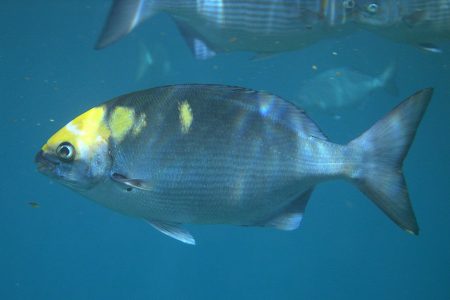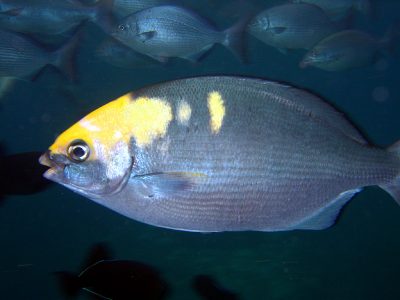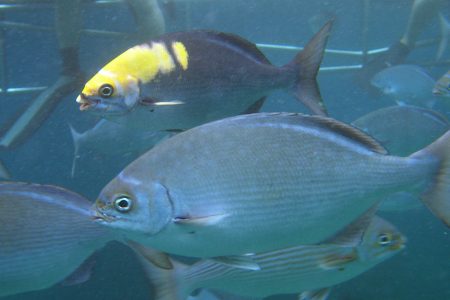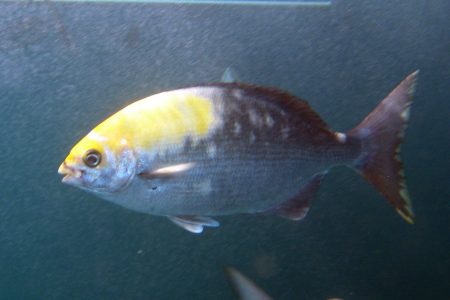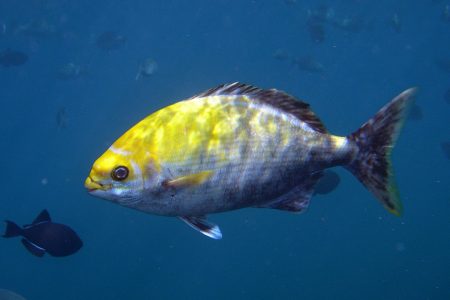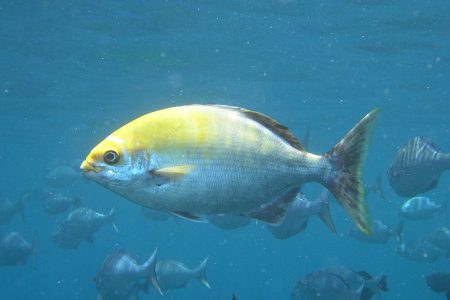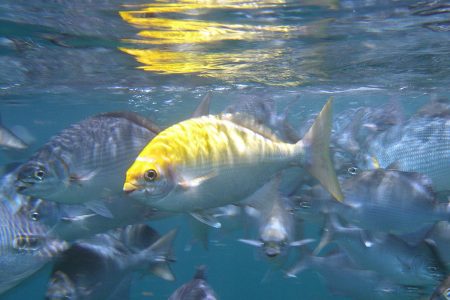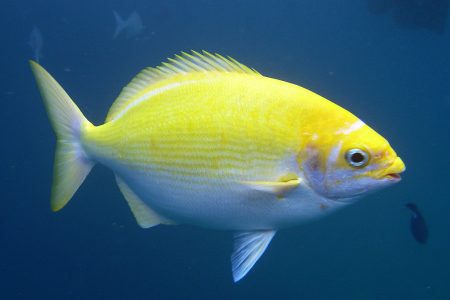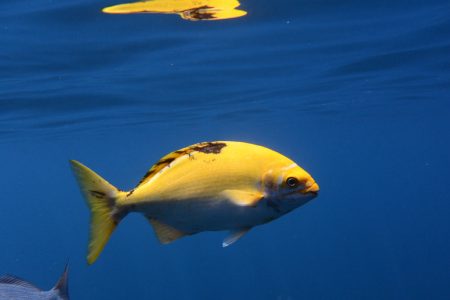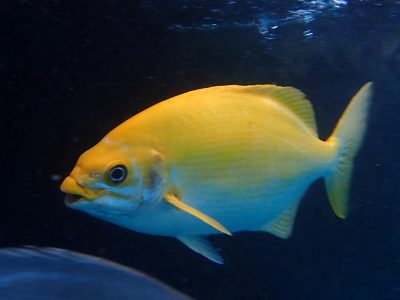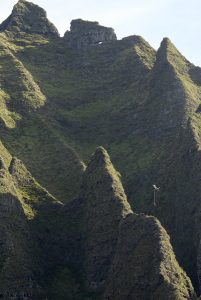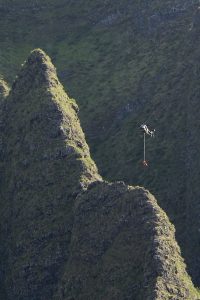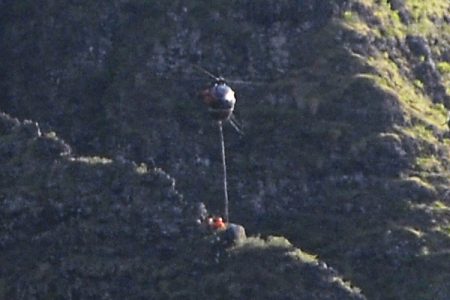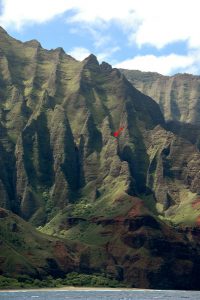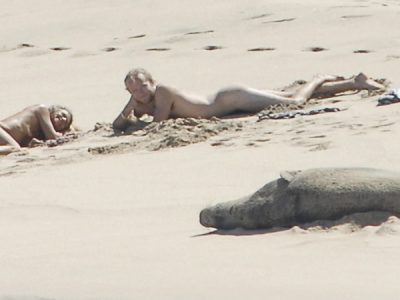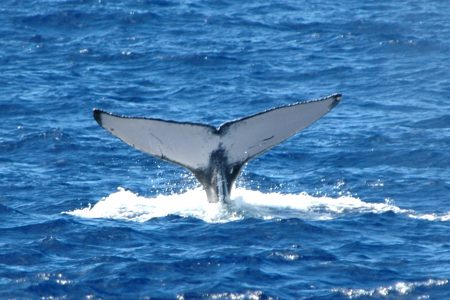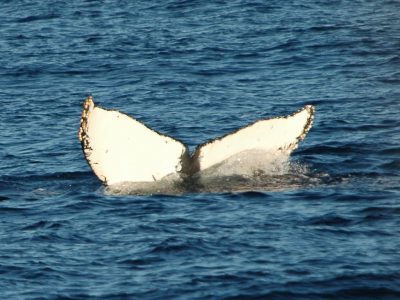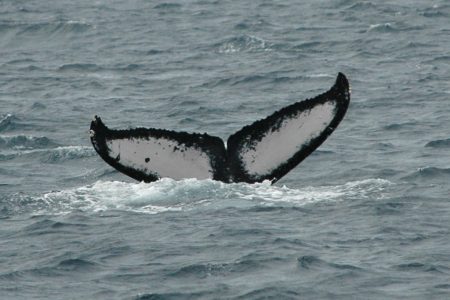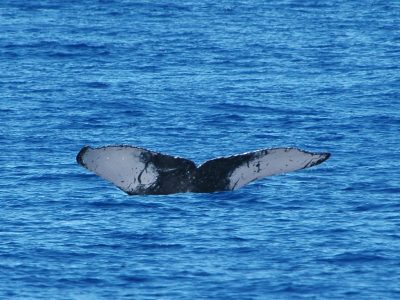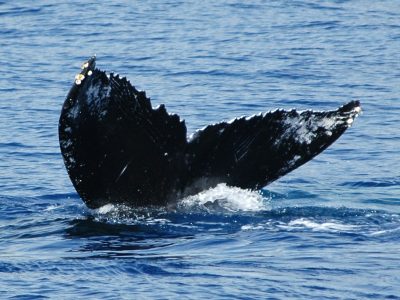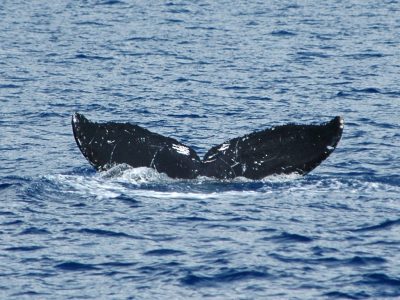Nenue Xanthic Transformation
This is a Nenue, Gray Chub, Rudder-fish, or Kyphosus bigibbus.
Call it what you like it but I will call it a Nenue. In these pictures it is going through a xanthic color change. Which means that it is turning yellow.
Yellow Nenue are very rare. I had seen a few near Kauai and Niihau before. What is new here is, this is the first time that I had seen one change color.
It started as a small yellow spot on its nose. We thought that it was an injury at first. The spot grew and became more yellow. I started to tell people that it was turning yellow and it did. Of course most people probably thought that I was pulling their leg on this. People believe all kinds of stories. When they hear something true.They suddenly become skeptical.
Why does it turn yellow? That is what everyone wants to know. The most common answer is that it is turning into the Queen Nenue and becoming a female. This is usually followed with the fact that if something happens to it another will turn yellow and take its place. Now this doesn't hold water. If it were true they would become extinct. The yellow ones are far to rare for this to be true.
The important thing to me is that it does turn yellow. It doesn't hatch as a yellow fish. This was new to me.
There are also yellow Trumpet-fish. These are also rare.
Some fish do change color and sex at the same time. So the above reason is not so outlandish as it may seem. The Parrot-fish and Wrasses are some of the best examples of this.
I will keep an eye on this fish and see if it changes back. It would be interesting too if more started to turn yellow. Then again someone may just decide to see it the yellow ones do really taste better.
This is the same fish. This year the black has started to appear. I think that it may not last much longer.
This fish is still swimming around.
Helicopter Rescue
Sunday March 30. I spotted a helicopter towing something orange underneath. I thought that it was a water bucket but someone with binoculars said that it was a person.
It was flying high on the ridge above Kalalau Beach. They looked like they were searching for something. We watched as we drove by wondering what they were looking for. I did get some pictures although I wasn't sure what I was looking for.
The next day I read in the Garden Island that it had been two hikers. They were picked up and brought to the beach. I am guessing that is where they started from.
Many times I am asked if people climb the cliffs of the Napali. The answer is that the cliffs are not good for climbing. There is much loose rock making them very dangerous no matter how good a climber you are. The rock can give way or fall on you. In spite of this people do climb the cliffs. Some are rescued, as in this case, putting the rescue workers in danger themselves. Even with a helicopter it is very dangerous to rescue people. Many places are too steep to get a helicopter in the wind is often strong and gusty especially near the ridges that they have to pick people off of. Some people fall, some are just never heard from again, and some do make it. The cliffs are very unforgiving.
The Hawaiians say that there were trails up the cliffs around the island a long time ago. They are long gone now. I often look at the cliffs and try to imagine were the trails might have gone. I have no intention of trying to climb them though. They are not safe to climb or even to stand too close to the edge or the bottom of them.
4-6-2008 I learned some new information about this rescue from someone who was at Kalalau at the time.
The two were called Hollywood because they were working on a documentary video. That morning a Monk seal had come up on Kalalau Beach to rest. They spent much time watching the seal. They decided that it was a sign that they should climb to the hole at the top of the cliff. The people at Kalalau told them that that was not a good idea.
They climbs toward the hole and got very far up the cliff. Eventually they called for help with their satellite phone. The helicopter rescued them and brought them back to the beach. The rescuers would not let them bring their backpack back with them. Afterwards all they were thinking of was how to get back up the cliff and get their backpack with their phone and video camera inside.
Whale Tails
Humpback Whales are most commonly identified by their tails. (The coloration of the ventral surface of their flukes.) The Whales have different patterns ranging from all white to all black. There are also scars that distinguish them from one to another. The tails are not the only way to distinguish them. They are the easiest and the only practical way to identify a large number of whales.
For Whale Researchers identifying individual whales is just a starting point. It enables them to monitor the movements and behavior of individual whales and of groups of whales (pods). It has been learned that whales move from pod to pod and other than mother and calf pairs that they have no long term associations with other whales.
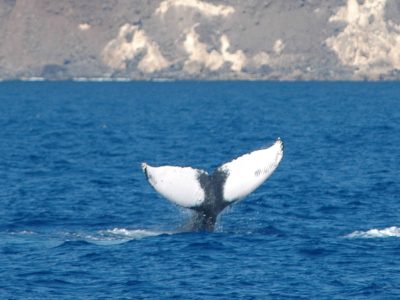
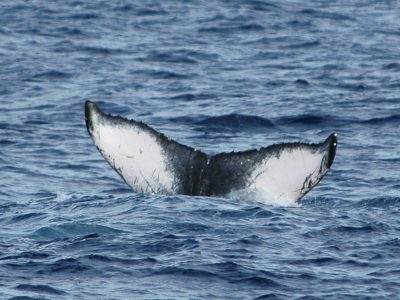
Data Bases for whales are maintained and used in the estimation of whale populations. The latest numbers I have heard were for between 6,000 to 10,000 Humpback Whales visiting Hawaiian waters. That is a wide range because even though whales are very big they are in an even bigger ocean. They also spend a lot of time under water. There is still much that is not known about them. They are also estimated to be increasing in population by 5 to 7 percent per year.
These pictures were taken from Kauai waters of Humpback whales from the winter of 2005 - 2006. I tried to show the range of coloration and some with scars. The whales don't always raise their tails when diving too. In a pod the same whales will often never raise there tails while others will raise theirs the same way every time. Although they are unique they can also be very hard to differentiate.
I try to just concentrate on getting interesting pictures and enjoying the show.
